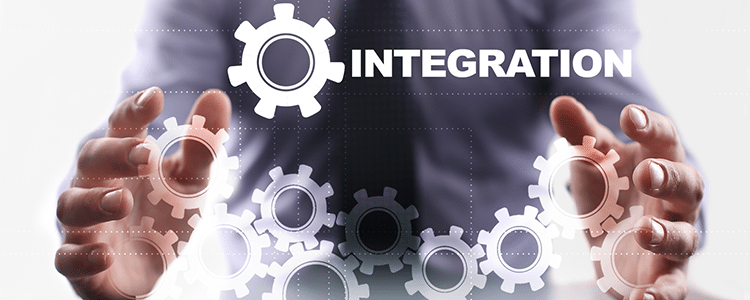ERP integration is about ensuring your ERP implementation results in the seamless connection of all your company’s technology and processes. Today, we’re sharing a few key benefits of ERP integration. These benefits are especially relevant to companies struggling with organizational siloes.
What is ERP Integration?
An ERP integration strategy focuses on how your new ERP system will connect with the other systems that you’re implementing or that you already have in place. Depending on your enterprise strategy, you may need to integrate systems such as:
- Customer relationship management(CRM)
- Business intelligence
- Human capital management (HCM)
- E-commerce
Employees shouldn’t have to log in to various software programs to access the data they need. After all, one of the main reasons you’re likely investing in an ERP system is to gain visibility into your entire enterprise.
This is a key reason why ERP system integration is so important – it ensures employees and executives can access all the information they need in one system.
2025 Top 10 Manufacturing ERP Systems Report
Are you a mid- to large-sized manufacturing firm? This report is for you. Download it now to learn what kind of advanced functionality is available in the market today.
Postmodern ERP
One ERP integration strategy is what’s known as postmodern ERP. First coined by Gartner back in 2014, this term describes the transition that ERP projects have taken since their initial introduction.
From the 1970s to the 1990s, ERP was highly function-based, relying on best-of-breed solutions from various ERP vendors.
Then, in the 2010s, the idea of a suite-based solution came into play. Known as modern ERP, this strategy centered on developing integrated and standardized processes. However, these platforms could be time-consuming and costly to customize.
Fast forward to postmodern ERP – this strategy merges the best of both approaches. It strikes a balance between vendor integration and business agility.
Several innovations have made this shift away from the “MegaSuite” possible, including:
- Cloud ERP technologies
- Application programming interfaces (APIs)
- The software as a service (SaaS) model
With these innovations, companies can create custom ERP solutions by integrating different solutions from various vendors.
4 Benefits of ERP Integration
Integration is a keyword at every phase of an ERP project. Let’s take a look at a few ERP business benefits you can realize when you make ERP integration a top priority from the beginning:
1. Centralized Data
Why should you take the time to ensure your new ERP solution will integrate with your other solutions? The answer is simple: data visibility.
When everyone in your company can easily access the information they need, workflows run more smoothly, and processes are more efficient. For instance, your accounting team can see updated sales numbers with a click, rather than waiting to hear back from the busy sales department.
In short, integrating your systems gives everyone in your organization access to the same real-time (or near real-time) data.
2. Automated Processes
Think about the tasks that require the most manual work. Now, imagine how much time your organization could save if those tasks were automated. ERP integration makes this possible by allowing your various systems to communicate.
However, integration alone doesn’t guarantee efficiency. Before you integrate your systems, you may have to conduct business process management or business process reengineering to improve your processes so they support the flow of information across functional areas.

3. Workflow Visualization
Organizational siloes can lead to communication breakdowns, productivity lags and frustrated customers. A fully integrated ERP system breaks down these siloes by helping employees see what their coworkers are doing across departments. In other words, they understand the upstream and downstream processes that are connected to their own processes and know how their individual jobs impact the entire value chain.
This visualization is important for two reasons:
- Employees are more likely to embrace new processes when they understand how integral these processes are to the company as whole.
- Managers benefit from a knowledge of end-to-end processes as it allows them to trace issues back to root causes in specific parts of a workflow.
4. Reduced Human Error
Finally, it goes without saying that increased automation and digitization means business workflows are now significantly less dependent on human involvement.
Not only does this free your employees to focus on higher-level work, but it also reduces the possibility of human error. This means there’s a smaller risk of typos, miscalculations and other seemingly small oversights that could result in shipping delays or other operational disruptions.
Successful ERP Integration Starts Here
Rather than rushing into ERP selection, it’s best to give thought to how the systems you’re evaluating will work with your existing systems. You shouldn’t have to abandon those systems and start from scratch if they’re delivering ROI.
Panorama’s ERP consultants can help you choose the right ERP software for your digital strategy. If you’re interested in learning more, we’d love to help. Request a free consultation below.













